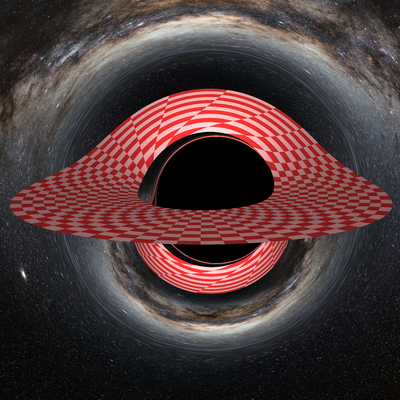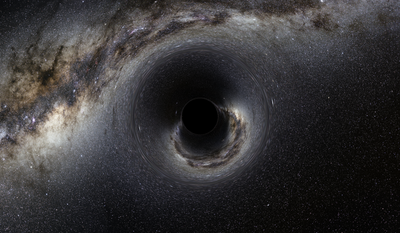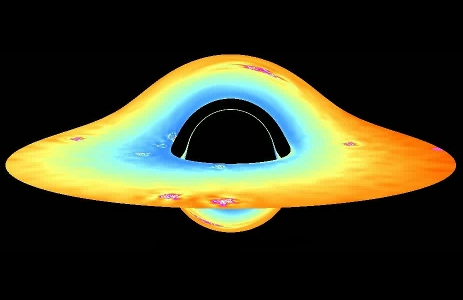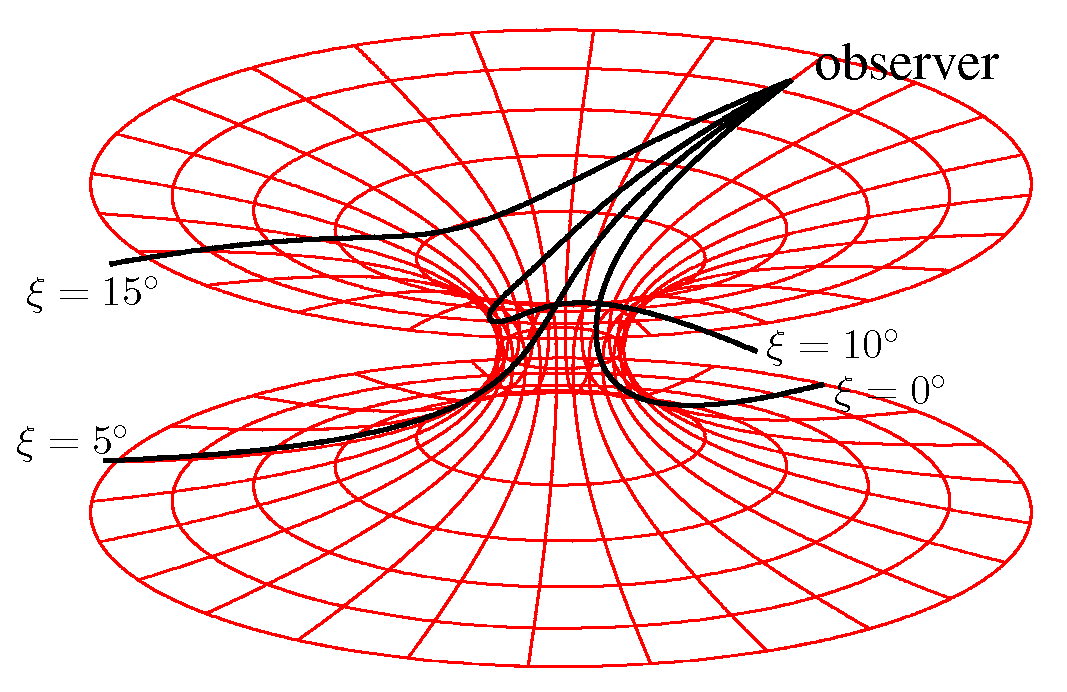General Relativity
 |
Kerr black hole with thin accretion disk
Accretion disk around Kerr black hole (a=0.7M) represented by a ring with inner radius r=4M and outer radius r=14M. The inclination angle between the disk normal and the direction to the observer reads i=80deg. Here, only the geometric distortion of the disk and the background is shown. Render your own black hole using GeoViS. The scene description file can be found here. Please note that only geometric effects are taken into account. The Milky Way panorama is by ESO/S.Brunier. |
 |
Black hole passing in front of the Milky Way background
A Schwarzschild black hole moves in front of the Milky Way background panorama. The movie was rendered using GeoViS. The Milky Way panorama is by ESO/S.Brunier. |
 |
Schwarzschild black hole with non-relativistic SPH accretion disk
The disk is based on a non-relativistic Smoothed-Particle-Hydrodynamics (SPH) simulation by Roland Speith. The apparent distortion of the disk is due to the bending of light within the Schwarzschild spacetime. Besides the primary image of the disk, there are also higher order images (lower ring and upper thin ring) visible. The lower ring shows the rear bottom side of the disk. The color encodes the apparent temperature where blue is hot and red is cold. The left part of the disk approaches the observer and, thus, appears blue-shifted. |
 |
Visualization of a Morris-Thorne wormhole
The Morris-Thorne wormhole spacetime is one of the most simple, non-trivial solution of Einstein's General Theory of Relativity. However, it is not so easy to understand what an observer traveling through this wormhole spacetime would actually see. The most straight forward method to visualize the first-person view is four-dimensional ray-tracing. Note: The spacetime geometry described in the Morris-Thorne paper should be called "Ellis wormhole" according to H. Ellis. More details can be found here |
